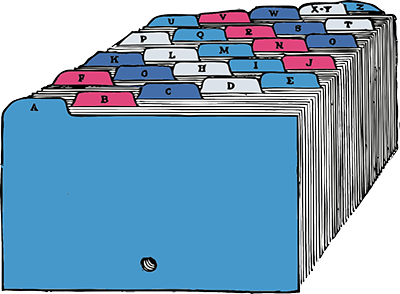Another question we often get is, “why are there three credit bureaus and not just one?” Being for profit companies, each consumer reporting agency (or CRA) believes they can create a better product than their competitors. It is the exact same reason we have as many car makers as we do.
They all make cars, but they tailor them for their target market.
There are actually many more than just three credit bureaus, but most are typically regional or specialized and not used by national lenders.
We’re going to review this information again because it among the most important of the course. The main sections found on any credit report regardless of the bureau include:
- Personally Identifying Information
- Trade Lines
- Public Records
- Inquiries
- Consumer Statement
- Consumer Rights
Your personally identifying information usually includes any variety of names you’ve used when applying for credit accounts, as well as misspellings due to transcription errors. This information will also include your social security number (although we recommend you check the “exclude” option so your SSN does not end up on your report), a history of your addresses, phone numbers, spouse(s) names, and even employers.
Trade Lines make up the most important section of your credit report by far. You will find here a list of all your credit accounts from the past seven to ten years or more, the creditor’s name and address, when you opened the accounts, when you closed them (if they are closed), their current status (open, closed, charged off, included in bankruptcy, etc.), your current account balances, the highest balance you’ve had on the account, the original balance (for home, car, student, and personal loans), the current payment due, and, most importantly, a history of your payments indicating whether they were made on time or late. Depending upon the credit bureau, this section may be split into adverse accounts (collections and those with late payments) and accounts in good standing.
The Public Records section used to include judgments and tax liens, but since 2018, the only bit of information it will list is a personal bankruptcy filed within the past seven years for Chapter 13 filings and the past ten years for Chapter 7 filings.
The Inquiries section lists the names of any organization that has pulled your credit report in the past two years. Depending upon the credit bureau, these may be listed under Active, Promotional, or Soft/Passive inquiries. Only those under Active would have any effect on your credit rating, and only for a year or less.
All consumers have the right to add a Consumer Statement of 100 words or less to their credit reports. This provides an opportunity to explain current or past error disputes that you have not found satisfactory. This statement has no effect on your credit rating but may influence any human eyes reviewing your report as part of an application.
The Consumer Rights section lists many of your rights regarding your credit. Of most relevance are the instructions for disputing any errors you find on your credit report.
Now that you know what is on a credit report, would you like to know what specifically to look for and assess among all that information? Stick with us to learn more.
Sample Credit Reports
Take a look at the sample credit reports for fictional consumer "Riley D Public" below. You can see how each of the main consumer reporting agencies (Equifax, Experian, TransUnion) organize your information differently.
Exercise
Try to find the following information on each of the three credit reports:
- Riley's most recent employer
- Riley's current address
- Riley's account with the highest credit limit
- Who looked at Riley's account most recently
- The creditor who looked at Riley's credit report most recently
You will notice that you won't find the same information on each credit report.






